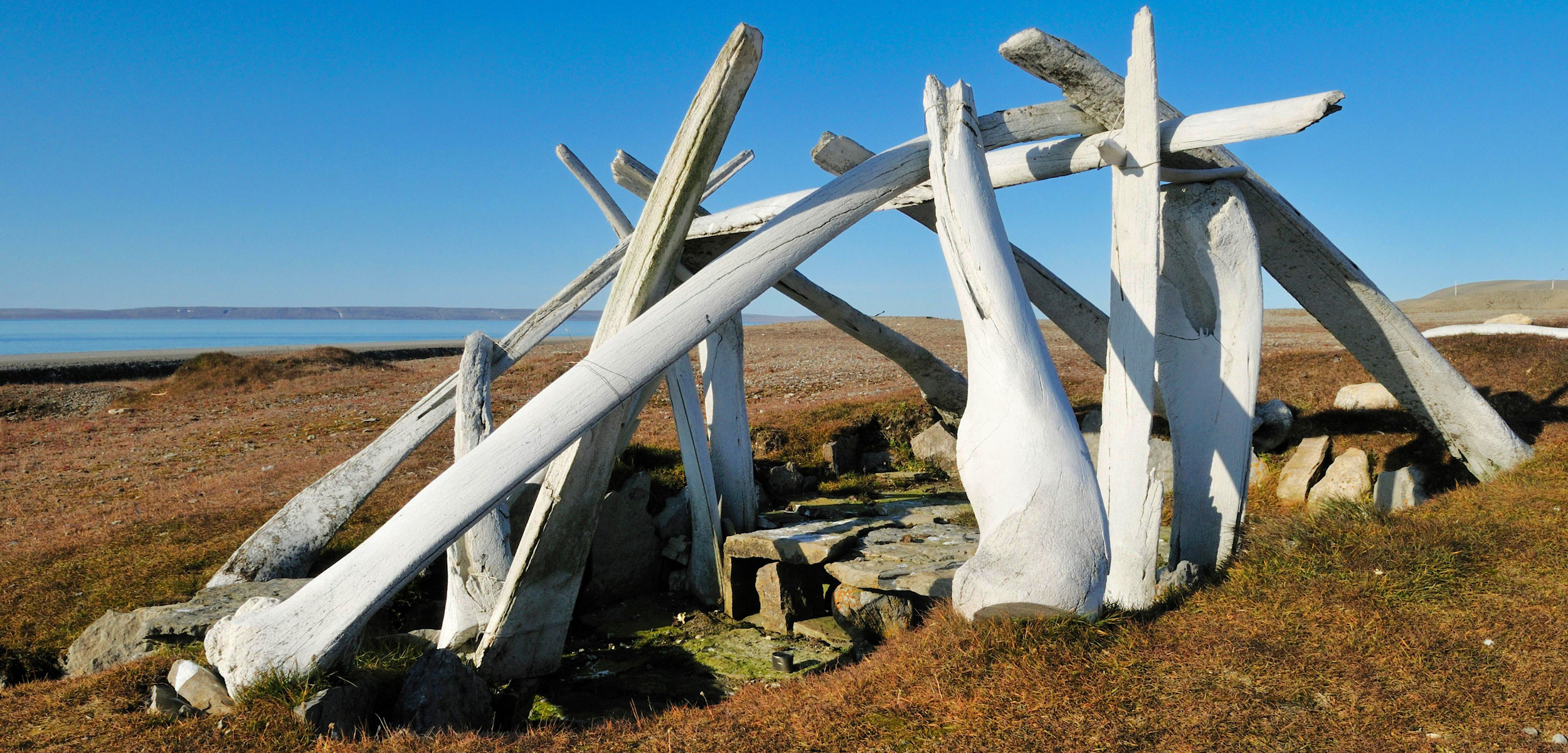Not Your Average Beach House
Forget rebar or prestressed lumber—the sea provides a bounty of alternative construction materials.
Article body copy
When you live on the shore and the land can’t provide, you turn to the sea. Coastal dwellers know this well, and some have even brought the sea into their built environment. Whether due to a lack of terrestrial timber or an abundance of building blocks beneath the waves, humans from around the world have learned to make ingenious, reliable dwellings from surprising marine materials. Here are five coastal building materials that would not be, but for the sea.
Whale Bone
For hundreds of years starting in about 1000 CE, when the dark Arctic winters descended, the Thule people who lived across Alaska, Canada’s North, and Greenland took shelter in whale bone houses. These dramatic domed structures were built over a shallow pit paved with flat rocks. Sizes varied, but one house site measured about four meters in diameter. Up to 20 long whale bones, usually jaws, were used as rafters for the curved roof, supported by smaller rib and spine bones. Skin, sod, and wood were added on top, sealing out the elements. The Thule builders favored bowhead whale jawbones, which could be as long as four meters. They hunted bowheads and also salvaged bones from beached specimens. Today, the exact construction method remains a mystery, but computer models and life-size replicas illuminate how these structures may have looked.
Corals
Engineers and architects (not to mention Jesus) suggest building your house on rock, not sand. Residents of small South Pacific islands face a dilemma: their land consists almost entirely of sand. Luckily, tropical waters nurture an unexpected source of stone: vast coral reefs. As corals grow upward and outward, they lay down layers of calcium carbonate, which makes great stone. Houses on reef-rich islands around the world, from the South Pacific islands to the Bahamas, sport coral-stone foundations. But perhaps the most impressive coral-stone structure is Nan Madol, near the island of Pohnpei, Micronesia. This site, just 1.5 kilometers by 0.5 kilometers, is Venice-like with about 100 coral and basalt islets built on top of the underlying coral reef. Built between 1200 and 1500 CE, the site was the center of the Saudeleur dynasty, and the islets supported temples, houses, and tombs also constructed of basalt and corals.
Eelgrass Thatch
Before modern materials such as rebar and prestressed concrete, houses in Europe contained a lot of flammable materials such as wood and straw thatch, and the specter of catastrophic fire lurked in every hearth, candle, and lamp. But several hundred years ago, thanks to deforestation, the residents of the small Danish island of Læsø were forced to look beyond traditional thatch for homebuilding materials. They discovered eelgrass, a marine plant that was abundant around the island and was so fire-resistant that it rarely burned even when dry. Even better, the salty grass repelled vermin and lasted for decades. Soon, the island’s houses sported huge, shaggy roofs of silvery eelgrass thatch. The tradition waned in the 1930s after a seagrass disease reduced the meadows, and just a few original roofs remain. Today, Danish architects have resurrected the material, using dry-packed eelgrass as insulation in the roofs and walls of new dwellings on the island.
Driftwood
All oceans carry things between distant coasts on their long currents, often surprising the residents of one shore with treasures from another. In the Arctic, where thousands of kilometers of shoreline are well beyond the treeline, driftwood is one such treasure—Siberian pines appear in barren Greenland; North American poplars wash up on Svalbard, Norway. Big rivers such as the Mackenzie, in Canada’s North, also sluice logs from inland forests to the nearly treeless coast. The Inuvialuit of the western Arctic used driftwood for houses from about 1500 to 1900 CE. They set four or five strong posts in the corners to create a central square space and braced narrower, longer driftwood logs against them to create walls or sloping roofs over adjacent alcoves. With these alcoves, the finished house was often cruciform (cross shaped). More driftwood and sod completed the ceiling, and planks made of driftwood lined the floor. The first driftwood log house to be found intact was excavated by archaeologists in 2014. It was from a long-abandoned summer beluga-hunting camp near Tuktoyaktuk, Northwest Territories, where the Mackenzie meets the Arctic Ocean.
Lime
The world pours about 10 billion tonnes of concrete each year. Ingredients vary from place to place, but the principal materials remain the same: small chunks of rock, such as gravel or ground-up stone, bound together by a matrix. That matrix is often cement made from calcium-rich rocks, such as limestone and chalk. Since that calcium comes from tiny shells of the ocean creatures that formed the rock millions of years ago, most cement technically comes from the sea, but some builders shorten the cycle and go right to the source: seashells. In colonial America, so-called “tabby concrete” was made from burning oyster shells to create lime and then mixing it with ash, sand, and rock. Today, in places such as India and Madagascar, residents still burn seashells in huge wooden kilns to make lime, which they use to reinforce their houses.

